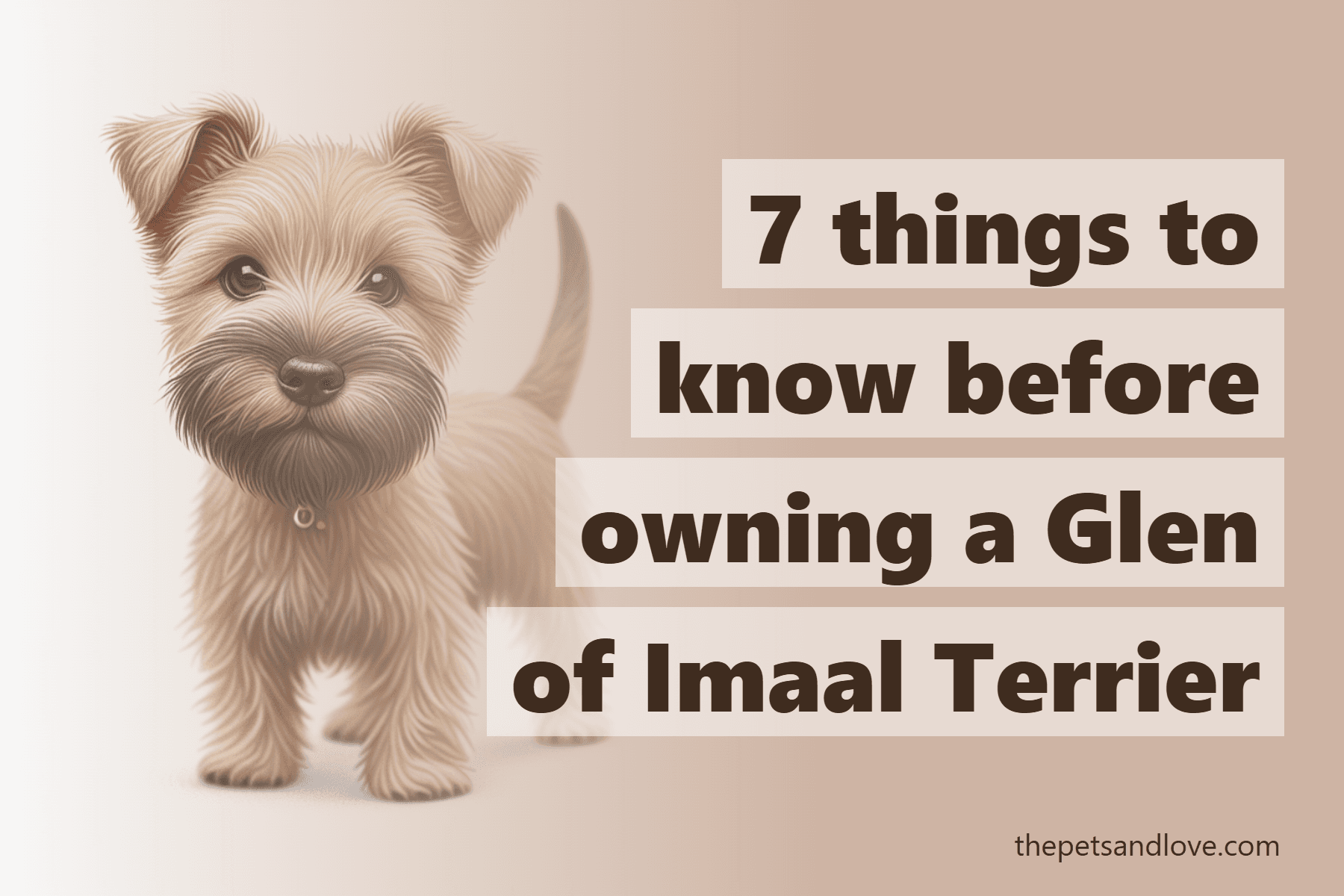7 things to know before owning a Glen of Imaal Terrier

If you're considering adding a Glen of Imaal Terrier to your family, you're in for a unique and charming companion. These sturdy little dogs don’t act like your typical terriers — they’re calmer, quieter, and surprisingly laid-back for the breed group. But don’t let their easygoing vibe fool you — Glens are tough, loyal, and full of personality.
Here’s what you really need to know before bringing one home, based on real-world experience:
Personality: Calm but Courageous
Glens are terriers, yes — but the mellow kind. They're not the type to bark their heads off at every squirrel or dig up your backyard just for fun. Most of the time, they’d rather hang out with you than race around the yard. That said, if they catch a whiff of prey or hear something suspicious, all that calmness goes out the window — they’re focused, fearless, and ready to act.
They’re affectionate, loyal, and form strong bonds with their families. But they’re not clingy. They enjoy your company but don’t demand constant attention — it’s a nice balance.
Exercise Needs: Moderate and Manageable
Glens aren’t high-energy whirlwinds like some other terriers. A daily walk and some playtime (about 30 minutes) usually does the trick. Just be cautious with young pups — their front legs are still developing, so avoid intense jumping or rough play too early.
Keep them leashed or in a secure yard — they’ve got a strong prey drive and won’t hesitate to chase after smaller animals.
Grooming: Low-Maintenance, But Don’t Skip It
These dogs have a double coat that doesn’t shed much, which is great. But they do need regular brushing (once or twice a week) to prevent mats and tangles. Plan on trimming their coats a couple of times a year and giving them a bath if they get dirty. Don’t forget the basics: nail trims, ear checks, and teeth brushing.
Living With a Glen: Apartment-Friendly, Family-Savvy
Glens adapt well to different living spaces — city apartments or country homes, they’re good either way. They're not big barkers, which makes them great neighbors. But they do love to dig and chase, so a secure yard is a must if you have one.
They’re fine with older kids who understand how to play gently. Toddlers? Not the best match. Glens are sturdy and strong, and they might accidentally knock a small child over during play.
Training: Smart, Stubborn, and Food-Motivated
These dogs are clever and quick learners, but they have a stubborn streak. Keep training sessions short, upbeat, and full of praise or treats. Harsh corrections won’t get you far — think positive reinforcement only.
Socialization is key. Without it, Glens might get wary of strangers or testy with other dogs. Raised around other pets, they can learn to live peacefully — but their strong prey drive means small animals may not always be safe.
Health and Diet: Keep an Eye Out
Glens are generally healthy and live around 10–15 years. Like many breeds, they can be prone to genetic issues like hip dysplasia or eye problems. Regular vet checkups and a good diet go a long way.
They don’t need a ton of food, but they do need quality. Stick to a balanced diet for moderately active dogs and watch the treats — they love to eat and can pack on pounds easily.
Not Natural Swimmers
Despite their tough build and love for play, Glens aren’t built for swimming. Their short legs and stocky body make it hard to stay afloat. If you’re around water, keep them close — or better, let them wear a doggie life vest.
A Quiet Companion With a Hunter’s Heart
Originally bred in Ireland to hunt silently, Glens are still wired to chase small critters. That hunting instinct is strong, but they’re not yappy like many other terriers. In fact, their low bark rate is one of their best features — especially if you live in close quarters.
Bottom Line?
The Glen of Imaal Terrier is a rare gem — sturdy, sweet, and sensible. They’re not for everyone, especially homes with very young kids or lots of small pets. But if you’re looking for a low-key, affectionate dog with a bit of sass and a lot of heart, a Glen might just be the perfect match.
Just make sure you’re ready to return the loyalty and love — because once a Glen bonds with you, you’ve got a friend for life.
Take the Quiz
Is a Glen of Imaal Terrier Right for You?
The Glen of Imaal Terrier is a loyal and spirited dog with a big heart. Discover if this rare Irish breed is your perfect match by taking our quiz! Answer all questions below to discover your compatibility score and get personalized insights.
Question #1: What is the main reason you want a dog?
Question #2: How active is your lifestyle?
Question #3: How much time can you dedicate to your dog daily?
Question #4: What best describes your home environment?
Question #5: What size dog do you prefer?
Question #6: What personality traits do you want in your dog?
Question #7: How much grooming can you handle?
Question #8: Who else lives with the dog?
Question #9: Is this your first dog?
Please answer all 9 questions to see your results
